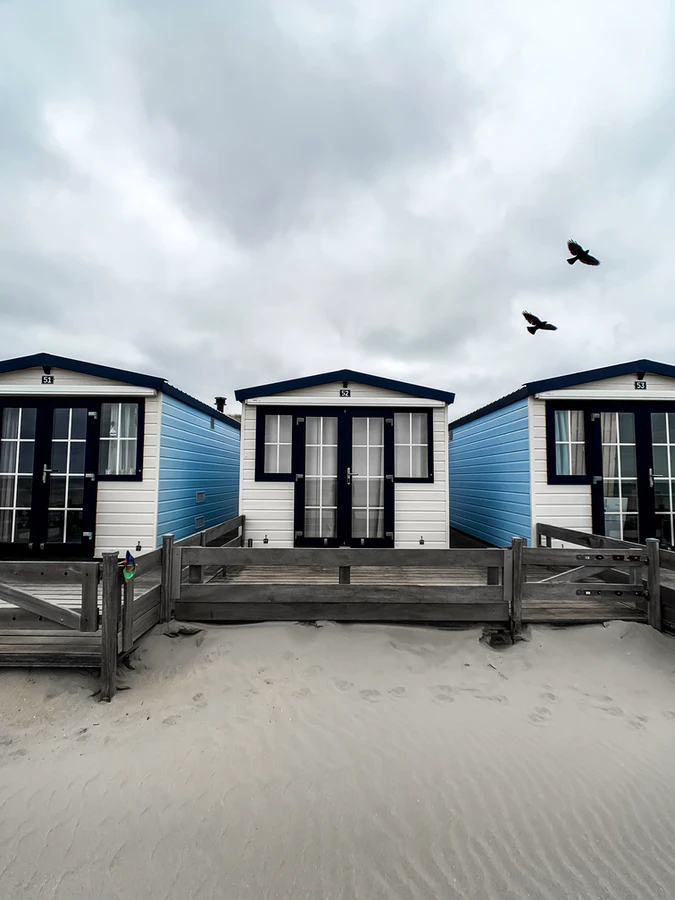In this article, Smartstone’s energy-saving experts tell you everything you need to know about park home insulation measures. One of the few downsides to park homes is that, come wintertime, they can get quite cold due to their lack of energy-efficient materials and design features. Of course, it’s easy enough to turn up the heating. However, the higher the thermostat goes, the higher the heating bills.
How does heat escape from a park home?
While park homes make for excellent countryside accommodation, they tend to not be very energy efficient. This is because most park homes are raised off the ground. Air circulates underneath causing cold air to enter your home through the floorboards and pipework.
In fact, the crawl space underneath your park home contributes to a potential 50% heat loss. As such, you are likely spending more than you need to on heating to keep your park home warm.
Should I insulate my park home?
Insulating your park home is the best option to reduce your bills and make your home more energy efficient. New-build park homes are constructed with insulation in mind. However, it’s important to note that insulation can begin to deteriorate and lose its effectiveness over time. Moreover, older park homes are likely to have poor standards of insulation, resulting in excessive costs to keep rooms heated.
On average, park home fuel bills in the UK exceed £1000 a year. Quality insulation materials installed by a professional can significantly reduce heat loss in your property by as much as 50% and save you up to £250 on your annual heating bills.
Types of park home insulation
There are several ways to effectively insulate your park home. Consider all your options to make the right choice for your property and avoid unnecessary expenses.
The most common methods of improving insulation in your park home are:
Wall insulation
To insulate your park home’s walls, you will need to affix insulated panels to the exterior of the property and apply a layer of render and decorative coating. You’ll also need to consider moving your windows outwards. This is so they’ll be in line with the new thickness of the panelled walls. This could also be an opportune time to upgrade your windows with A+ rated panes. This will improve thermal efficiency, reduce air leakage, and help you benefit from solar gain.
Roof insulation
Roof insulation ensures your park home’s roof space is thoroughly insulated and well ventilated for better air circulation. This prevents condensation and mould damaging your property.
Underfloor insulation
As your home loses a significant amount of heat through the floors, underfloor insulation is an extremely effective method to create a warmer interior. Spray foam remains a popular option as it’s one of the most thermally efficient insulants on the market. It also prevents drafts coming up through the floors and maintains the temperature of your living spaces, meaning you won’t need to use radiators or heaters as much.
Other benefits of park home insulation
By insulating your park home, you can look forward to a cosier indoors plus reduced energy bills. However, there’re are plenty other benefits to to look forward to when you insulate your park home with quality spray foam. Here are just a few:
- Spray foam reduces your park home’s EPC rating, which will also see your property’s value rise.
- Spray foam drastically reduces noise intrusion more than any other insulation material on the market.
- Insulation improves the air quality within your home.
- It eliminates harmful mould growth and condensation which cause damage to your property.
- Quality spray foam also has a decades long lifespan, meaning you won’t need to worry about maintenance or faulty insulation every few years.
Things to consider when installing park home insulation
Before you set about hiring an installer to insulate your park home, check with the park owners or local authorities on whether you need planning permissions to carry out any works. Some park owners may stipulate certain regulations in your pitch agreement that prevent certain works from being carried out. This is especially true if changes affect the exterior appearance of your park home.
It’s also highly recommended that you appoint a surveyor to ensure that the insulation you choose is suitable for your property and that no issues need to be addressed beforehand, such as mould or damp patches.
Can I benefit from funding for my park home insulation?
You might be able to benefit from grant funding when carrying out insulation works on your park home. You can contact your local authority who should be able to guide you on any insulation funding schemes you may be eligible for.
Alternatively, get in touch with SmartStone Energy Solutions. As one of the UK’s leading experts on insulation, we can sort your park home insulation out from A to Z.



